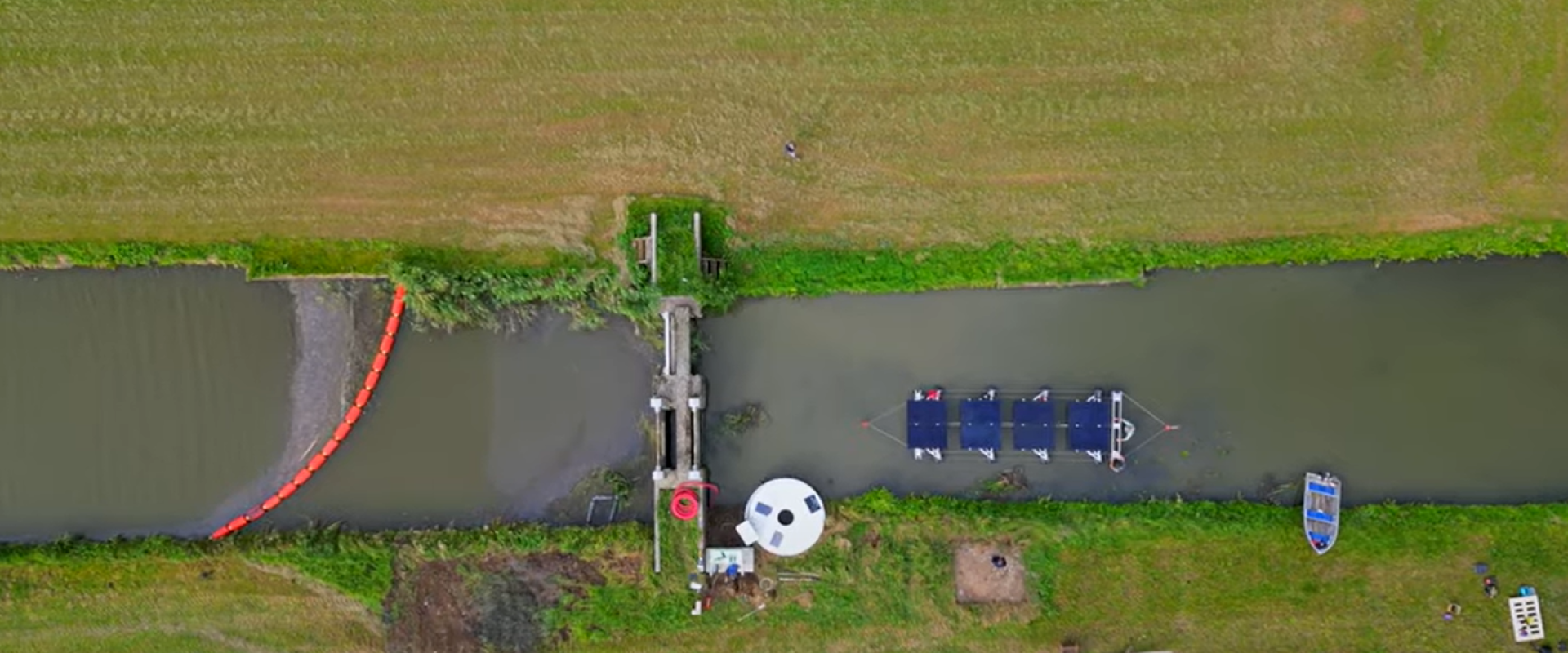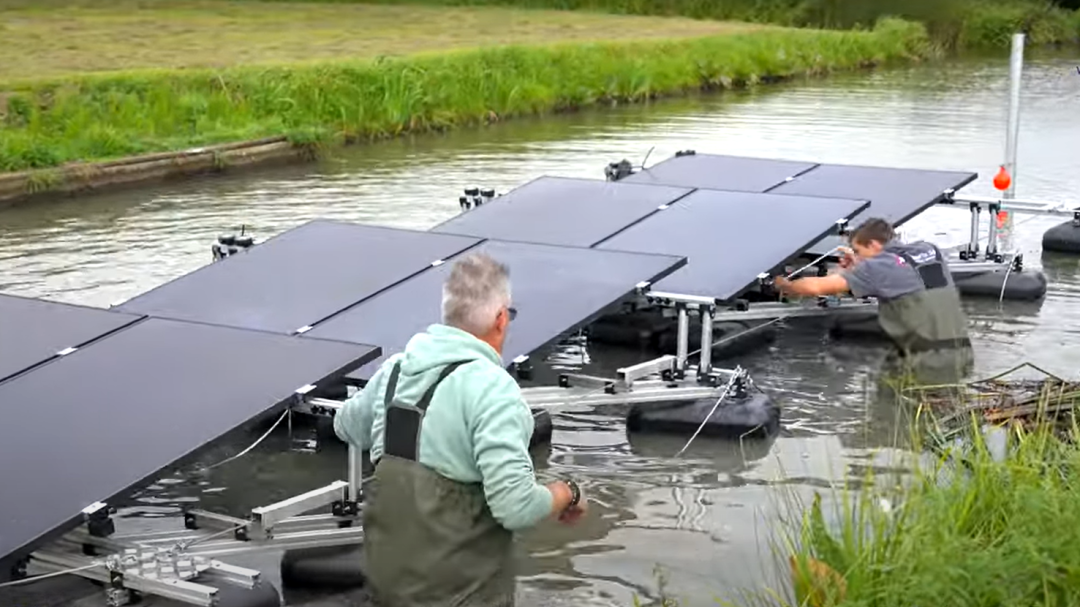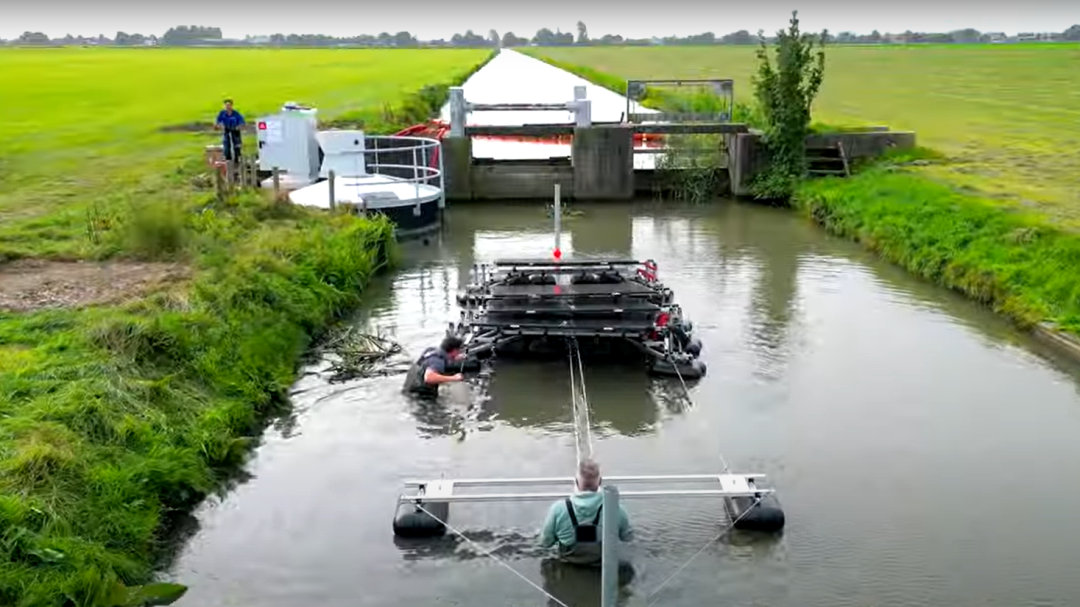
‘Sun-on-canal’ pilot project, a new step in energy transition
Solar panels that nestle together like shopping trolleys on the water and generate energy for the adjacent fish lift in Almkerk, the Netherlands. With ‘sun-on-canal’ pilot project, the Rivierenland Water Board is taking a new step in the field of energy transition.
The Rivierenland Water Board wants to be energy neutral by 2030 and is looking at whether it is possible to generate sustainable energy on dikes and waters under their management. “In this pilot we are testing a new system for generating sustainable energy on canals without this hindering our work as a water board,” says project leader Bjorn Prudon.


Great potential
The potential of sun on the canal is great: water boards manage thousands of kilometers of canals. “With this innovation, we only generate the energy that is needed on site,” says Prudon. In the pilot, eight solar panels float in the water next to the first Dutch fish lift from 2018, a successful innovation for fish migration that is being followed everywhere in the Netherlands. With the solar panels, the fish lift is self-sufficient and no longer dependent on the electricity grid.
The ‘sun-on-canal’ project may also ease the work of water boards. Thousands of dams and pumping stations are in operation for water management. Many of them are far from the electricity grid, are operated manually or depend on heavy batteries. If the sun-on-canal catches on, dams can generate their own energy and be automated. The implementation of water management would then no longer be dependent on the electricity grid.


Stacking functions
The Netherlands is working on making the energy supply more sustainable. “We are familiar with solar panels on buildings, fields, along highways and even on deep large puddles,” says Prudon. “The demand for space remains high. That is why the water board is looking for ways to stack functions.” The canal on which the solar panels float carries water to and from. Maintenance consists, for example, of mowing and dredging. Solar panels should not get in the way. “This new system works just like the shopping trolleys in the supermarket. If we need to be under the floating panels for maintenance, we simply temporarily nestle the entire system together.”
Energy neutral and climate neutral
The sun-on-water pilot is part of the INNOZOWA innovation project which aims to develop a sun on water system suitable for shallow waters. For this pilot, the Rivierenland Water Board is working together with the Dutch municipality of Altena, Huisman Etech Experts, Easyfix Solar and Vislift – innovation in fish migration.



